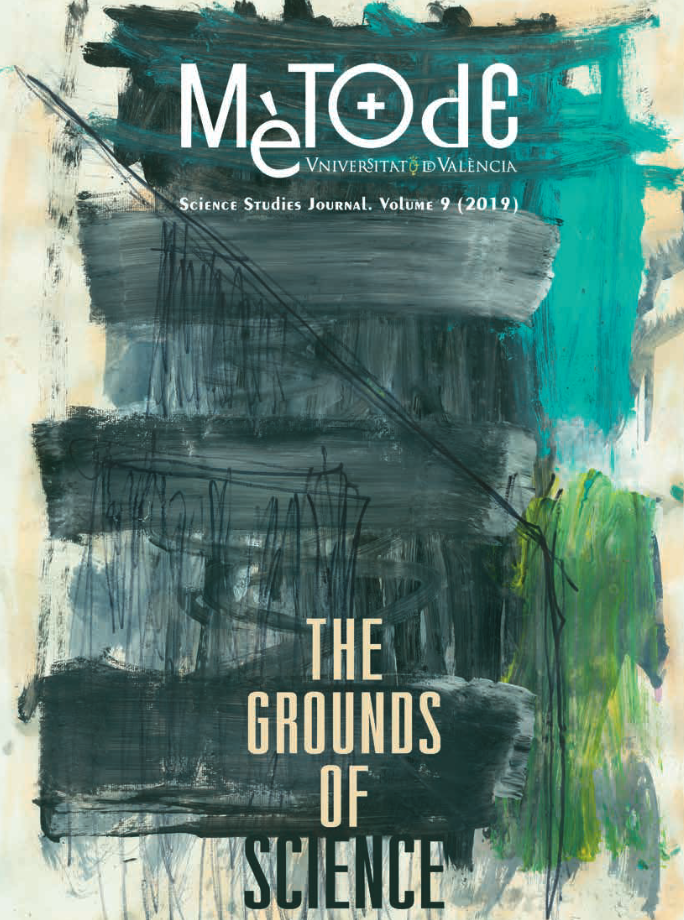When the state of the art is ahead of the state of understanding: Unintuitive properties of deep neural networks
DOI:
https://doi.org/10.7203/metode.9.11035Keywords:
deep learning, machine learning, neural networks, unintuitive properties Abstract
Abstract
Deep learning is an undeniably hot topic, not only within both academia and industry, but also among society and the media. The reasons for the advent of its popularity are manifold: unprecedented availability of data and computing power, some innovative methodologies, minor but significant technical tricks, etc. However, interestingly, the current success and practice of deep learning seems to be uncorrelated with its theoretical, more formal understanding. And with that, deep learning’s state-of-the-art presents a number of unintuitive properties or situations. In this note, I highlight some of these unintuitive properties, trying to show relevant recent work, and expose the need to get insight into them, either by formal or more empirical means.
 Downloads
Downloads
 References
References
Cybenko, G. (1989). Approximation by superposition of sigmoidal functions. Mathematics of Control, Signals and Systems, 2(4), 303–314. doi: 10.1007/BF02551274
Dauphin, Y. N., Pascanu, R., Gulcehere, C., Cho, K., Ganguli, S., & Bengio, Y. (2014). Identifying and attacking the saddle point problem in high-dimensional non-convex optimization. In Z. Ghahramani, M. Welling, C. Cortes, N. D. Lawrence, & K. Q. Weinberger (Eds.), Advances in neural information processing systems, 27(pp. 2933–2941). New York, NY: Curran Associates Inc.
Erhan, D., Bengio, Y., Courville, A., Manzagol, P.-A., Vincent, P., & Bengio, S. (2010). Why does unsupervised pre-training help deep learning? Journal of Machine Learning Research, 11, 625–660.
Gilmer, J., Metz, L., Faghri, F., Schoenholz, S. S., Raghu, M., Wattenberg, M., & Goodfellow, I. (2018). Adversarial spheres. Retrieved from https://arxiv.org/abs/1801.02774
Goodfellow, I., Vinyals, O., & Saxe, A. M. (2015). Qualitatively characterizing neural network optimization problems. In Proceedings of the International Conference on Learning Representations (ICLR 2016). San Diego, CA, USA: ICLR. Retrieved from https://arxiv.org/abs/1412.6544
Han, S., Mao, H., & Dally, W. J. (2016). Deep compression: Compressing deep neural networks with pruning, trained quantization and Huffman coding. In Proceedings of the International Conference on Learning Representations (ICLR 2016). San Juan, Puerto Rico: ICLR. Retrieved from https://arxiv.org/abs/1510.00149
Hinton, G., Vinyals, O., & Dean, J. (2014). Distilling the knowledge in a neural network. In NIPS 2014 Deep Learning and Representation Learning Workshop. Montreal, Canada: NIPS. Retrieved from https://arxiv.org/abs/1503.02531
Kawaguchi, K. (2016). Deep learning without poor local minima. In D. D. Lee, M. Sugiyama, U. V. Luxburg, I. Guyon, & R. Garnett (Eds.), Advances in neural information processing systems, 29(pp. 586–594). New York, NY: Curran Associates Inc.
Larochelle, H. (2017, 28 june). Neural networks II. Deep Learning and Reinforcement Learning Summer School. Montreal Institute for Learning Algorithms, University of Montreal. Retrieved on 12 January 2018 from https://mila.quebec/en/cours/deep-learning-summer-school-2017/slides/
LeCun, Y., Bengio, Y., & Hinton, G. (2015). Deep learning. Nature, 521, 436–444. doi: 10.1038/nature14539
LeCun, Y., Bottou, L., Orr, G. B., & Müller, K.-R. (2002). Efficient backprop. In G. B. Orr & K.-R. Müller (Eds.), Neural networks: Tricks of the trade. Lecture notes in computer science. Volume 1524 (pp. 9–50). Berlin: Springer. doi: 10.1007/3-540-49430-8
Li, H., Xu, Z., Taylor, G., & Goldstein, T. (2017). Visualizing the loss landscape of neural nets. Retrieved from https://arxiv.org/abs/1712.09913
McCloskey, M., & Cohen, N. (1989). Catastrophic interference in connectionist networks: The sequential learning problem. Psychology of Learning and Motivation, 24, 109–165. doi: 10.1016/S0079-7421(08)60536-8
Nguyen, A., Yosinski, J., & Clune, J. (2015). Deep neural networks are easily fooled: High confidence predictions for unrecognizable images. In Proceedings of the IEEE International Conference on Computer Vision and Pattern Recognition (CVPR) (pp. 427–436). Boston, MA: IEEE. doi: 10.1109/CVPR.2015.7298640
Papernot, N., McDaniel, P., Goodfellow, I., Jha, S., Celik, Z. B., & Swami, A. (2017). Practical black-box attacks against machine learning. In Proceedings of the 2017 ACM Asia Conference on Computer and Communications Society (Asia-CCCS) (pp. 506–619). New York, NY: Association for Computing Machinery. doi: 10.1145/3052973.3053009
Serrà, J., Surís, D., Miron, M., & Karatzoglou, A. (2018). Overcoming catastrophic forgetting with hard attention to the task. In Proceedings of the 35th International Conference on Machine Learning (ICML) (pp. 4555–4564). Stockholm: ICML.
Szegedy, C., Zaremba, W., Sutskever, I., Bruna, J., Erhan, D., Goodfellow, I., & Fergus, R. (2014). Intriguing properties of neural networks. In Proceedings of the International Conference on Learning Representations (ICLR). Banff, Canada: ICLR. Retrieved from https://arxiv.org/abs/1312.6199
Wolfram, S. (2002). A new kind of science. Champaign, IL: Wolfram Media.
Yosinski, J., Clune, J., Bengio, Y., & Lipson, H. (2014). How transferable are features in deep neural networks? In Z. Ghahramani, M. Welling, C. Cortes, N. D. Lawrence, & K. Q. Weinberger (Eds.), Advances in neural information processing systems, 27 (pp. 3320–3328). New York, NY: Curran Associates Inc.
Zhang, C., Bengio, S., Hardt, M., Recht, B., & Vinyals, O. (2017). Understanding deep learning requires rethinking generalization. In Proceedings of the International Conference on Learning Representations (ICLR). Toulon, France: ICLR. Retrieved from https://arxiv.org/abs/1611.03530
Zoph, B., & Le, Q. V. (2016). Neural architecture search with reinforcement learning. Proceedings of the International Conference on Learning Representations (ICLR). Toulon, France: ICLR. Retrieved from https://arxiv.org/abs/1611.01578
Downloads
Published
How to Cite
-
Abstract1500
-
PDF653
Issue
Section
License
![]()
All the documents in the OJS platform are open access and property of their respective authors.
Authors publishing in the journal agree to the following terms:
- Authors keep the rights and guarantee Metode Science Studies Journal the right to be the first publication of the document, licensed under a Creative Commons Attribution-NonCommercial-NoDerivatives 4.0 International License that allows others to share the work with an acknowledgement of authorship and publication in the journal.
- Authors are allowed and encouraged to spread their work through electronic means using personal or institutional websites (institutional open archives, personal websites or professional and academic networks profiles) once the text has been published.





